-
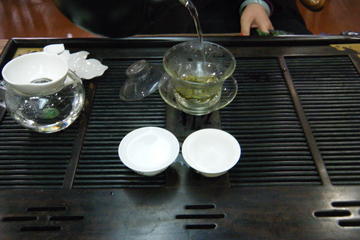 National Tea Museum
National Tea Museum The National Tea Museum is the only tea-themed museum in China. It was opened in 1991 and is located in Westlake Village in Shuangfeng, Hangzhou. The museum is surrounded by clusters of tea farms and features various exhibition halls that depict the history and development of t
National Tea Museum
National Tea Museum The National Tea Museum is the only tea-themed museum in China. It was opened in 1991 and is located in Westlake Village in Shuangfeng, Hangzhou. The museum is surrounded by clusters of tea farms and features various exhibition halls that depict the history and development of t
-
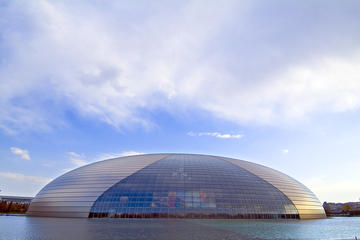 National Center for the Performing Arts
National Center for the Performing Arts The unmistakable National Center for the Performing Arts sits immediately to the west of Tiananmen Square and the Great Hall of the People in central Beijing. This oval structure is made from thousands of titanium plates combined with sheets of glass and is
National Center for the Performing Arts
National Center for the Performing Arts The unmistakable National Center for the Performing Arts sits immediately to the west of Tiananmen Square and the Great Hall of the People in central Beijing. This oval structure is made from thousands of titanium plates combined with sheets of glass and is
-
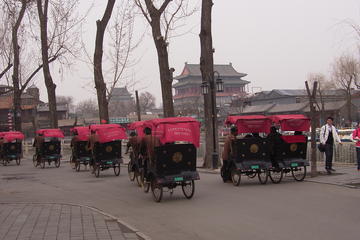 Nanluoguxiang
Nanluoguxiang Nanlouguxiang, an alleyway in Beijing lined with traditional hutong courtyard houses, has a history spanning more than 800 years. One of Beijing’s oldest hutongs, Nanluoguxiang was built during the Yuan Dynasty and today houses a collection of bars, restaurants, boutiques and galleri
Nanluoguxiang
Nanluoguxiang Nanlouguxiang, an alleyway in Beijing lined with traditional hutong courtyard houses, has a history spanning more than 800 years. One of Beijing’s oldest hutongs, Nanluoguxiang was built during the Yuan Dynasty and today houses a collection of bars, restaurants, boutiques and galleri
-
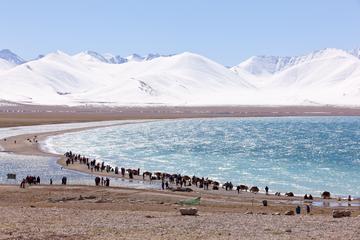 Namtso Lake
Namtso Lake This massive saltwater lake is the second largest lake in China and one of the most-visited sites in all of Tibet. Surrounded by picturesque natural beauty, the areas high altitude requires most travelers to spend a few days adjusting to it in one of the neighboring cities before makin
Namtso Lake
Namtso Lake This massive saltwater lake is the second largest lake in China and one of the most-visited sites in all of Tibet. Surrounded by picturesque natural beauty, the areas high altitude requires most travelers to spend a few days adjusting to it in one of the neighboring cities before makin
-
 Museum of Sichuan Cuisine
Museum of Sichuan Cuisine Learn where Sichuan got its spice at the Museum of Sichuan Cuisine. Located about a 1.5-hour drive by car outside of downtown Chengdu near Pixian Old Town, the museum not only gives a history of Sichuan cuisine but is also home to a tea house and a restaurant where guests
Museum of Sichuan Cuisine
Museum of Sichuan Cuisine Learn where Sichuan got its spice at the Museum of Sichuan Cuisine. Located about a 1.5-hour drive by car outside of downtown Chengdu near Pixian Old Town, the museum not only gives a history of Sichuan cuisine but is also home to a tea house and a restaurant where guests
-
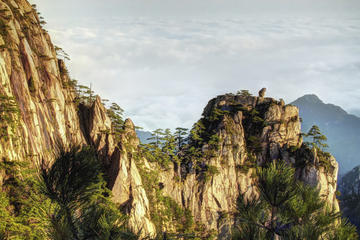 Mt Huangshan (Yellow Mountain)
Mt Huangshan (Yellow Mountain) Mt Huangshan (Yellow Mountain), a UNESCO World Heritage site since 1990, has featured in Chinese art and literature since the eighth century. Considered one of China’s most beautiful mountains, this peak rising above a sea of clouds in Anhui Province is famous for it
Mt Huangshan (Yellow Mountain)
Mt Huangshan (Yellow Mountain) Mt Huangshan (Yellow Mountain), a UNESCO World Heritage site since 1990, has featured in Chinese art and literature since the eighth century. Considered one of China’s most beautiful mountains, this peak rising above a sea of clouds in Anhui Province is famous for it
-
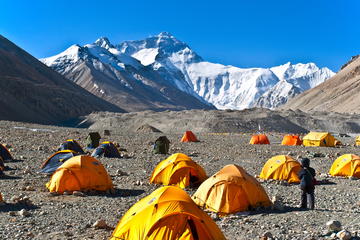 Mount Everest Base Camp
Mount Everest Base Camp While climbing Mount Everest is neither financially nor physically possible for many travelers, laying eyes on the world’s tallest peak from Mount Everest Base Camp is. The infamous peak has two base camps, one in Nepal and the other in Tibet, and for many, a visit to China
Mount Everest Base Camp
Mount Everest Base Camp While climbing Mount Everest is neither financially nor physically possible for many travelers, laying eyes on the world’s tallest peak from Mount Everest Base Camp is. The infamous peak has two base camps, one in Nepal and the other in Tibet, and for many, a visit to China
-
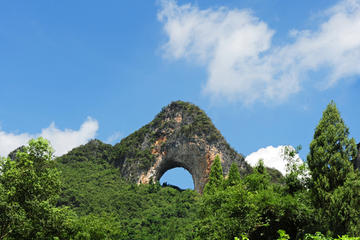 Hill (Yueliang Shan)
Moon Hill (Yueliang Shan) Moon Hill (Yueliang Shan) is perhaps the best known and most recognizable of Yangshuo’s limestone formations. Named for the moon-shaped hole in the top of the karst, Moon Hill rises over 250 feet (76.2 meters) above the surrounding countryside. On a clear day, you can wat
Hill (Yueliang Shan)
Moon Hill (Yueliang Shan) Moon Hill (Yueliang Shan) is perhaps the best known and most recognizable of Yangshuo’s limestone formations. Named for the moon-shaped hole in the top of the karst, Moon Hill rises over 250 feet (76.2 meters) above the surrounding countryside. On a clear day, you can wat
-
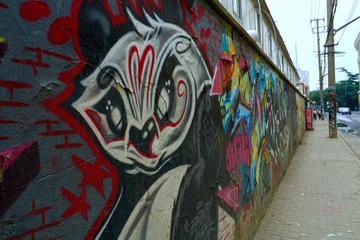 Moganshan Road
Moganshan Road Mogansham Road is a great place for art lovers to take a stroll while in Shanghai. Art buffs could easily spend hours in this fascinating district, browsing the galleries and studios that line the graffiti-clad street. There are also cafes and a bookshop in the area.Youll find all s
Moganshan Road
Moganshan Road Mogansham Road is a great place for art lovers to take a stroll while in Shanghai. Art buffs could easily spend hours in this fascinating district, browsing the galleries and studios that line the graffiti-clad street. There are also cafes and a bookshop in the area.Youll find all s
-
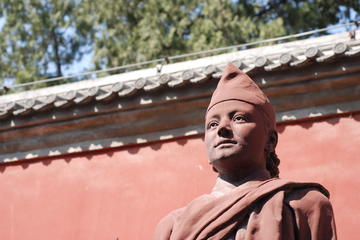 Miaoying Temple
Miaoying Temple Also known as the White Stupa Temple, this famed Chinese Buddhist shrine dates to the 13th century, when Kublai Khan commissioned it to help unite the Mongols, Han and Nepalese. He is said to have decided on the size of the temple by having archers fire arrows in all four direction
Miaoying Temple
Miaoying Temple Also known as the White Stupa Temple, this famed Chinese Buddhist shrine dates to the 13th century, when Kublai Khan commissioned it to help unite the Mongols, Han and Nepalese. He is said to have decided on the size of the temple by having archers fire arrows in all four direction
-
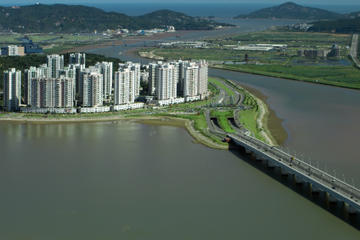 Macau Islands
Macau Islands One, two or three: strangely enough, all are correct answers as to how many islands are located in Macau. Historically Macau was home to two small islands which sat just offshore of the mainland: Coloane and Taipa. With recent land reclamation efforts, however, a third island – Cotai
Macau Islands
Macau Islands One, two or three: strangely enough, all are correct answers as to how many islands are located in Macau. Historically Macau was home to two small islands which sat just offshore of the mainland: Coloane and Taipa. With recent land reclamation efforts, however, a third island – Cotai
-
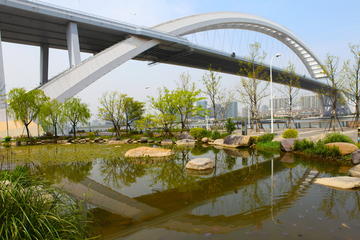 Lupu Bridge
Lupu Bridge Shanghai’s Lupu Bridge, the world’s first steel arch bridge and the second longest arch bridge after the Chaotianmen Bridge in Chongqing, extends 5.4 miles (8.7 kilometers) across the Huangpu River. Built in 2000, the bridge caught the attention of the engineering world with its use of
Lupu Bridge
Lupu Bridge Shanghai’s Lupu Bridge, the world’s first steel arch bridge and the second longest arch bridge after the Chaotianmen Bridge in Chongqing, extends 5.4 miles (8.7 kilometers) across the Huangpu River. Built in 2000, the bridge caught the attention of the engineering world with its use of
-
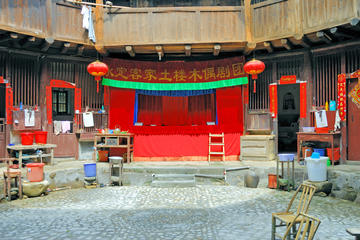 Luodai
Luodai Visitors flock to Luodai, an ancient town located in the Sichuan area of China, about 12.8 miles (20 kilometers) from Chengdu City. Situated at the base of Er’eshan Mountain as part of the Longquanshan Mountains, Luodai is considered the largest and best-preserved Hakka ancient town in the
Luodai
Luodai Visitors flock to Luodai, an ancient town located in the Sichuan area of China, about 12.8 miles (20 kilometers) from Chengdu City. Situated at the base of Er’eshan Mountain as part of the Longquanshan Mountains, Luodai is considered the largest and best-preserved Hakka ancient town in the
-
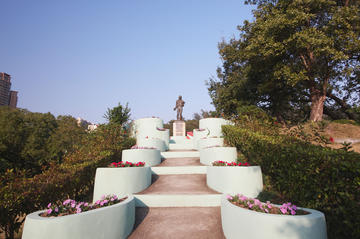 Luis de Camoes Grotto and Garden
Luis de Camoes Grotto and Garden Situated on a forested hillside in the old part of town, Luis de Camões Grotto and Garden is a welcome oasis of calm in one of the most densely populated places in the world. As the largest park in the city of Macau, the entire open space is dedicated to the Portug
Luis de Camoes Grotto and Garden
Luis de Camoes Grotto and Garden Situated on a forested hillside in the old part of town, Luis de Camões Grotto and Garden is a welcome oasis of calm in one of the most densely populated places in the world. As the largest park in the city of Macau, the entire open space is dedicated to the Portug
-
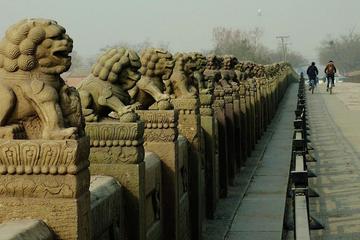 Lugou Bridge
Lugou Bridge Lions, lions, lions! Apart from its historical significance and its architectural cleverness, what sets the Lugou Bridge apart is its proliferations of lions - almost 500 of them sit on the span of the bridge, some big, other littler ones sitting on the backs or between the paws or ev
Lugou Bridge
Lugou Bridge Lions, lions, lions! Apart from its historical significance and its architectural cleverness, what sets the Lugou Bridge apart is its proliferations of lions - almost 500 of them sit on the span of the bridge, some big, other littler ones sitting on the backs or between the paws or ev
-
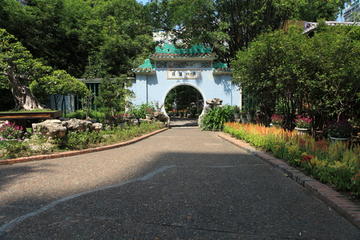 Lou Lim Iok Garden
Lou Lim Iok Garden The Lou Lim Iok Garden hasn’t always been a public park in Macau. From 1904-1925 this 4.4 acre garden was privately owned, slowly having been constructed by a wealthy local merchant before it was gradually sold off when his fortune eventually dwindled. For decades the manicured
Lou Lim Iok Garden
Lou Lim Iok Garden The Lou Lim Iok Garden hasn’t always been a public park in Macau. From 1904-1925 this 4.4 acre garden was privately owned, slowly having been constructed by a wealthy local merchant before it was gradually sold off when his fortune eventually dwindled. For decades the manicured
-
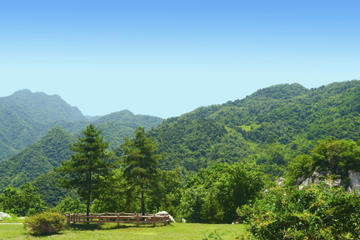 Louguantai National Forest Park
Louguantai National Forest Park Louguantai National Forest Park is the ideal place to visit if you want to get out of the big city and into rural China’s fascinating nature. The park wasn’t only popular with ancient emperors and poets, but today is maybe still best known for being the perfect spot
Louguantai National Forest Park
Louguantai National Forest Park Louguantai National Forest Park is the ideal place to visit if you want to get out of the big city and into rural China’s fascinating nature. The park wasn’t only popular with ancient emperors and poets, but today is maybe still best known for being the perfect spot
-
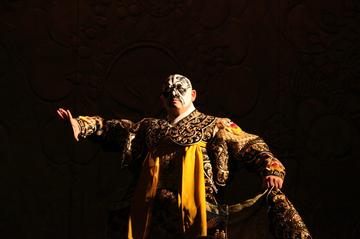 Liyuan Theater
Liyuan Theater Liyuan Theater is situated in the Qianmen Jianguo Hotel in Beijing’s Xuanwu District, south of Tiananmen Square. The area is famous for being the birthplace of Peking Opera, and the Liyuan Theater has been hosting this traditional performing art since 1990.Popular among tourists as
Liyuan Theater
Liyuan Theater Liyuan Theater is situated in the Qianmen Jianguo Hotel in Beijing’s Xuanwu District, south of Tiananmen Square. The area is famous for being the birthplace of Peking Opera, and the Liyuan Theater has been hosting this traditional performing art since 1990.Popular among tourists as
-
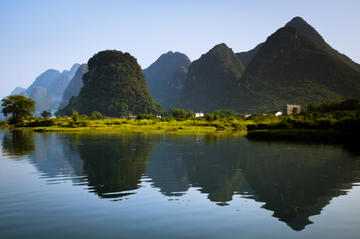 Little Li River (Yulong River)
Little Li River (Yulong River) The Little Li River (Yulong River) is the largest tributary of the Li River and the most popular for travelers in Yangshuo County, China. The Little Li River starts in northern Yangshuo County near the town of Litang and meanders 22 miles (35.4 kilometers) to where i
Little Li River (Yulong River)
Little Li River (Yulong River) The Little Li River (Yulong River) is the largest tributary of the Li River and the most popular for travelers in Yangshuo County, China. The Little Li River starts in northern Yangshuo County near the town of Litang and meanders 22 miles (35.4 kilometers) to where i
-
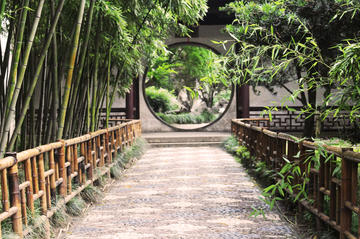 Lingering Garden
Lingering Garden Lingering Garden is located outside Changmen Gate in Suzhou, Jiangsu Province. Originally a private residence established by Xu Taishi during the Ming Dynasty, it is now one of the four most famous gardens in China and visited by many. In 1997, the garden was listed as a UNESCO Wo
Lingering Garden
Lingering Garden Lingering Garden is located outside Changmen Gate in Suzhou, Jiangsu Province. Originally a private residence established by Xu Taishi during the Ming Dynasty, it is now one of the four most famous gardens in China and visited by many. In 1997, the garden was listed as a UNESCO Wo
Total
2381 -travel
FirstPage PreviousPage NextPage LastPage CurrentPage:
3/120 20-travel/Page GoTo Page:
 National Tea Museum
National Tea Museum The National Tea Museum is the only tea-themed museum in China. It was opened in 1991 and is located in Westlake Village in Shuangfeng, Hangzhou. The museum is surrounded by clusters of tea farms and features various exhibition halls that depict the history and development of t
National Tea Museum
National Tea Museum The National Tea Museum is the only tea-themed museum in China. It was opened in 1991 and is located in Westlake Village in Shuangfeng, Hangzhou. The museum is surrounded by clusters of tea farms and features various exhibition halls that depict the history and development of t
 National Center for the Performing Arts
National Center for the Performing Arts The unmistakable National Center for the Performing Arts sits immediately to the west of Tiananmen Square and the Great Hall of the People in central Beijing. This oval structure is made from thousands of titanium plates combined with sheets of glass and is
National Center for the Performing Arts
National Center for the Performing Arts The unmistakable National Center for the Performing Arts sits immediately to the west of Tiananmen Square and the Great Hall of the People in central Beijing. This oval structure is made from thousands of titanium plates combined with sheets of glass and is
 Nanluoguxiang
Nanluoguxiang Nanlouguxiang, an alleyway in Beijing lined with traditional hutong courtyard houses, has a history spanning more than 800 years. One of Beijing’s oldest hutongs, Nanluoguxiang was built during the Yuan Dynasty and today houses a collection of bars, restaurants, boutiques and galleri
Nanluoguxiang
Nanluoguxiang Nanlouguxiang, an alleyway in Beijing lined with traditional hutong courtyard houses, has a history spanning more than 800 years. One of Beijing’s oldest hutongs, Nanluoguxiang was built during the Yuan Dynasty and today houses a collection of bars, restaurants, boutiques and galleri
 Namtso Lake
Namtso Lake This massive saltwater lake is the second largest lake in China and one of the most-visited sites in all of Tibet. Surrounded by picturesque natural beauty, the areas high altitude requires most travelers to spend a few days adjusting to it in one of the neighboring cities before makin
Namtso Lake
Namtso Lake This massive saltwater lake is the second largest lake in China and one of the most-visited sites in all of Tibet. Surrounded by picturesque natural beauty, the areas high altitude requires most travelers to spend a few days adjusting to it in one of the neighboring cities before makin
 Museum of Sichuan Cuisine
Museum of Sichuan Cuisine Learn where Sichuan got its spice at the Museum of Sichuan Cuisine. Located about a 1.5-hour drive by car outside of downtown Chengdu near Pixian Old Town, the museum not only gives a history of Sichuan cuisine but is also home to a tea house and a restaurant where guests
Museum of Sichuan Cuisine
Museum of Sichuan Cuisine Learn where Sichuan got its spice at the Museum of Sichuan Cuisine. Located about a 1.5-hour drive by car outside of downtown Chengdu near Pixian Old Town, the museum not only gives a history of Sichuan cuisine but is also home to a tea house and a restaurant where guests
 Mt Huangshan (Yellow Mountain)
Mt Huangshan (Yellow Mountain) Mt Huangshan (Yellow Mountain), a UNESCO World Heritage site since 1990, has featured in Chinese art and literature since the eighth century. Considered one of China’s most beautiful mountains, this peak rising above a sea of clouds in Anhui Province is famous for it
Mt Huangshan (Yellow Mountain)
Mt Huangshan (Yellow Mountain) Mt Huangshan (Yellow Mountain), a UNESCO World Heritage site since 1990, has featured in Chinese art and literature since the eighth century. Considered one of China’s most beautiful mountains, this peak rising above a sea of clouds in Anhui Province is famous for it
 Mount Everest Base Camp
Mount Everest Base Camp While climbing Mount Everest is neither financially nor physically possible for many travelers, laying eyes on the world’s tallest peak from Mount Everest Base Camp is. The infamous peak has two base camps, one in Nepal and the other in Tibet, and for many, a visit to China
Mount Everest Base Camp
Mount Everest Base Camp While climbing Mount Everest is neither financially nor physically possible for many travelers, laying eyes on the world’s tallest peak from Mount Everest Base Camp is. The infamous peak has two base camps, one in Nepal and the other in Tibet, and for many, a visit to China
 Hill (Yueliang Shan)
Moon Hill (Yueliang Shan) Moon Hill (Yueliang Shan) is perhaps the best known and most recognizable of Yangshuo’s limestone formations. Named for the moon-shaped hole in the top of the karst, Moon Hill rises over 250 feet (76.2 meters) above the surrounding countryside. On a clear day, you can wat
Hill (Yueliang Shan)
Moon Hill (Yueliang Shan) Moon Hill (Yueliang Shan) is perhaps the best known and most recognizable of Yangshuo’s limestone formations. Named for the moon-shaped hole in the top of the karst, Moon Hill rises over 250 feet (76.2 meters) above the surrounding countryside. On a clear day, you can wat
 Moganshan Road
Moganshan Road Mogansham Road is a great place for art lovers to take a stroll while in Shanghai. Art buffs could easily spend hours in this fascinating district, browsing the galleries and studios that line the graffiti-clad street. There are also cafes and a bookshop in the area.Youll find all s
Moganshan Road
Moganshan Road Mogansham Road is a great place for art lovers to take a stroll while in Shanghai. Art buffs could easily spend hours in this fascinating district, browsing the galleries and studios that line the graffiti-clad street. There are also cafes and a bookshop in the area.Youll find all s
 Miaoying Temple
Miaoying Temple Also known as the White Stupa Temple, this famed Chinese Buddhist shrine dates to the 13th century, when Kublai Khan commissioned it to help unite the Mongols, Han and Nepalese. He is said to have decided on the size of the temple by having archers fire arrows in all four direction
Miaoying Temple
Miaoying Temple Also known as the White Stupa Temple, this famed Chinese Buddhist shrine dates to the 13th century, when Kublai Khan commissioned it to help unite the Mongols, Han and Nepalese. He is said to have decided on the size of the temple by having archers fire arrows in all four direction
 Macau Islands
Macau Islands One, two or three: strangely enough, all are correct answers as to how many islands are located in Macau. Historically Macau was home to two small islands which sat just offshore of the mainland: Coloane and Taipa. With recent land reclamation efforts, however, a third island – Cotai
Macau Islands
Macau Islands One, two or three: strangely enough, all are correct answers as to how many islands are located in Macau. Historically Macau was home to two small islands which sat just offshore of the mainland: Coloane and Taipa. With recent land reclamation efforts, however, a third island – Cotai
 Lupu Bridge
Lupu Bridge Shanghai’s Lupu Bridge, the world’s first steel arch bridge and the second longest arch bridge after the Chaotianmen Bridge in Chongqing, extends 5.4 miles (8.7 kilometers) across the Huangpu River. Built in 2000, the bridge caught the attention of the engineering world with its use of
Lupu Bridge
Lupu Bridge Shanghai’s Lupu Bridge, the world’s first steel arch bridge and the second longest arch bridge after the Chaotianmen Bridge in Chongqing, extends 5.4 miles (8.7 kilometers) across the Huangpu River. Built in 2000, the bridge caught the attention of the engineering world with its use of
 Luodai
Luodai Visitors flock to Luodai, an ancient town located in the Sichuan area of China, about 12.8 miles (20 kilometers) from Chengdu City. Situated at the base of Er’eshan Mountain as part of the Longquanshan Mountains, Luodai is considered the largest and best-preserved Hakka ancient town in the
Luodai
Luodai Visitors flock to Luodai, an ancient town located in the Sichuan area of China, about 12.8 miles (20 kilometers) from Chengdu City. Situated at the base of Er’eshan Mountain as part of the Longquanshan Mountains, Luodai is considered the largest and best-preserved Hakka ancient town in the
 Luis de Camoes Grotto and Garden
Luis de Camoes Grotto and Garden Situated on a forested hillside in the old part of town, Luis de Camões Grotto and Garden is a welcome oasis of calm in one of the most densely populated places in the world. As the largest park in the city of Macau, the entire open space is dedicated to the Portug
Luis de Camoes Grotto and Garden
Luis de Camoes Grotto and Garden Situated on a forested hillside in the old part of town, Luis de Camões Grotto and Garden is a welcome oasis of calm in one of the most densely populated places in the world. As the largest park in the city of Macau, the entire open space is dedicated to the Portug
 Lugou Bridge
Lugou Bridge Lions, lions, lions! Apart from its historical significance and its architectural cleverness, what sets the Lugou Bridge apart is its proliferations of lions - almost 500 of them sit on the span of the bridge, some big, other littler ones sitting on the backs or between the paws or ev
Lugou Bridge
Lugou Bridge Lions, lions, lions! Apart from its historical significance and its architectural cleverness, what sets the Lugou Bridge apart is its proliferations of lions - almost 500 of them sit on the span of the bridge, some big, other littler ones sitting on the backs or between the paws or ev
 Lou Lim Iok Garden
Lou Lim Iok Garden The Lou Lim Iok Garden hasn’t always been a public park in Macau. From 1904-1925 this 4.4 acre garden was privately owned, slowly having been constructed by a wealthy local merchant before it was gradually sold off when his fortune eventually dwindled. For decades the manicured
Lou Lim Iok Garden
Lou Lim Iok Garden The Lou Lim Iok Garden hasn’t always been a public park in Macau. From 1904-1925 this 4.4 acre garden was privately owned, slowly having been constructed by a wealthy local merchant before it was gradually sold off when his fortune eventually dwindled. For decades the manicured
 Louguantai National Forest Park
Louguantai National Forest Park Louguantai National Forest Park is the ideal place to visit if you want to get out of the big city and into rural China’s fascinating nature. The park wasn’t only popular with ancient emperors and poets, but today is maybe still best known for being the perfect spot
Louguantai National Forest Park
Louguantai National Forest Park Louguantai National Forest Park is the ideal place to visit if you want to get out of the big city and into rural China’s fascinating nature. The park wasn’t only popular with ancient emperors and poets, but today is maybe still best known for being the perfect spot
 Liyuan Theater
Liyuan Theater Liyuan Theater is situated in the Qianmen Jianguo Hotel in Beijing’s Xuanwu District, south of Tiananmen Square. The area is famous for being the birthplace of Peking Opera, and the Liyuan Theater has been hosting this traditional performing art since 1990.Popular among tourists as
Liyuan Theater
Liyuan Theater Liyuan Theater is situated in the Qianmen Jianguo Hotel in Beijing’s Xuanwu District, south of Tiananmen Square. The area is famous for being the birthplace of Peking Opera, and the Liyuan Theater has been hosting this traditional performing art since 1990.Popular among tourists as
 Little Li River (Yulong River)
Little Li River (Yulong River) The Little Li River (Yulong River) is the largest tributary of the Li River and the most popular for travelers in Yangshuo County, China. The Little Li River starts in northern Yangshuo County near the town of Litang and meanders 22 miles (35.4 kilometers) to where i
Little Li River (Yulong River)
Little Li River (Yulong River) The Little Li River (Yulong River) is the largest tributary of the Li River and the most popular for travelers in Yangshuo County, China. The Little Li River starts in northern Yangshuo County near the town of Litang and meanders 22 miles (35.4 kilometers) to where i
 Lingering Garden
Lingering Garden Lingering Garden is located outside Changmen Gate in Suzhou, Jiangsu Province. Originally a private residence established by Xu Taishi during the Ming Dynasty, it is now one of the four most famous gardens in China and visited by many. In 1997, the garden was listed as a UNESCO Wo
Lingering Garden
Lingering Garden Lingering Garden is located outside Changmen Gate in Suzhou, Jiangsu Province. Originally a private residence established by Xu Taishi during the Ming Dynasty, it is now one of the four most famous gardens in China and visited by many. In 1997, the garden was listed as a UNESCO Wo